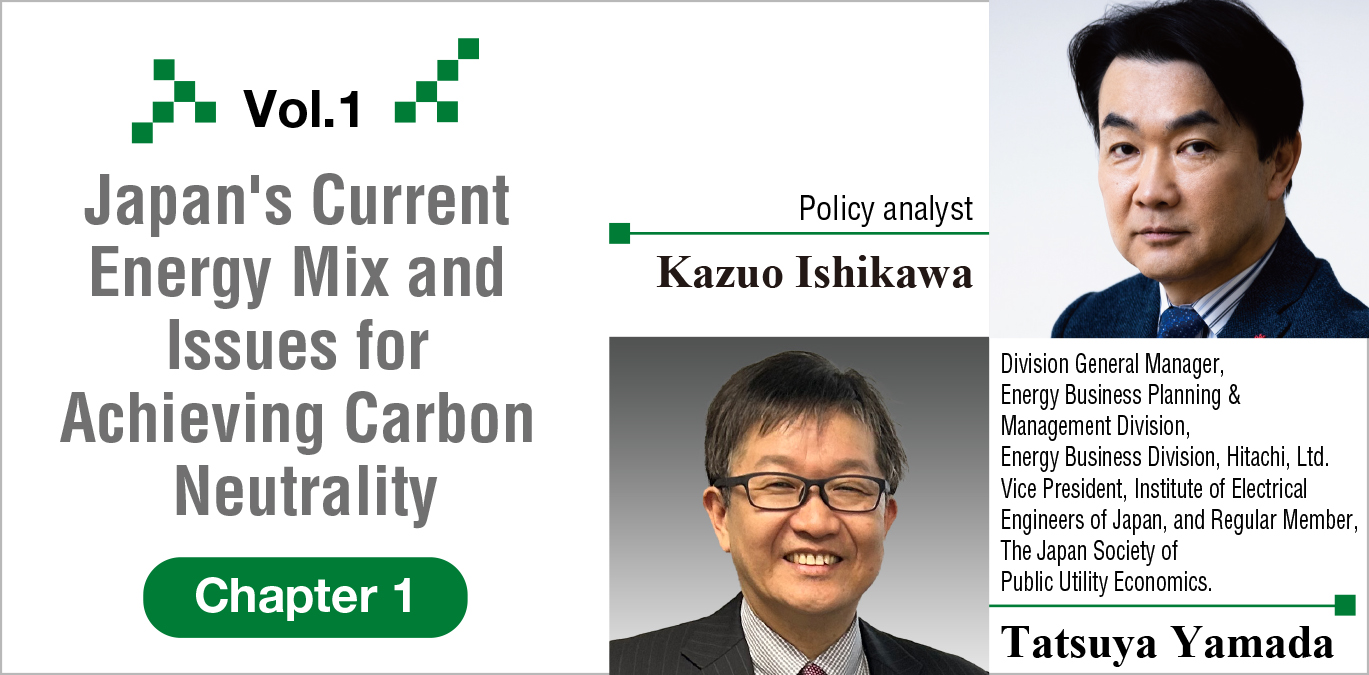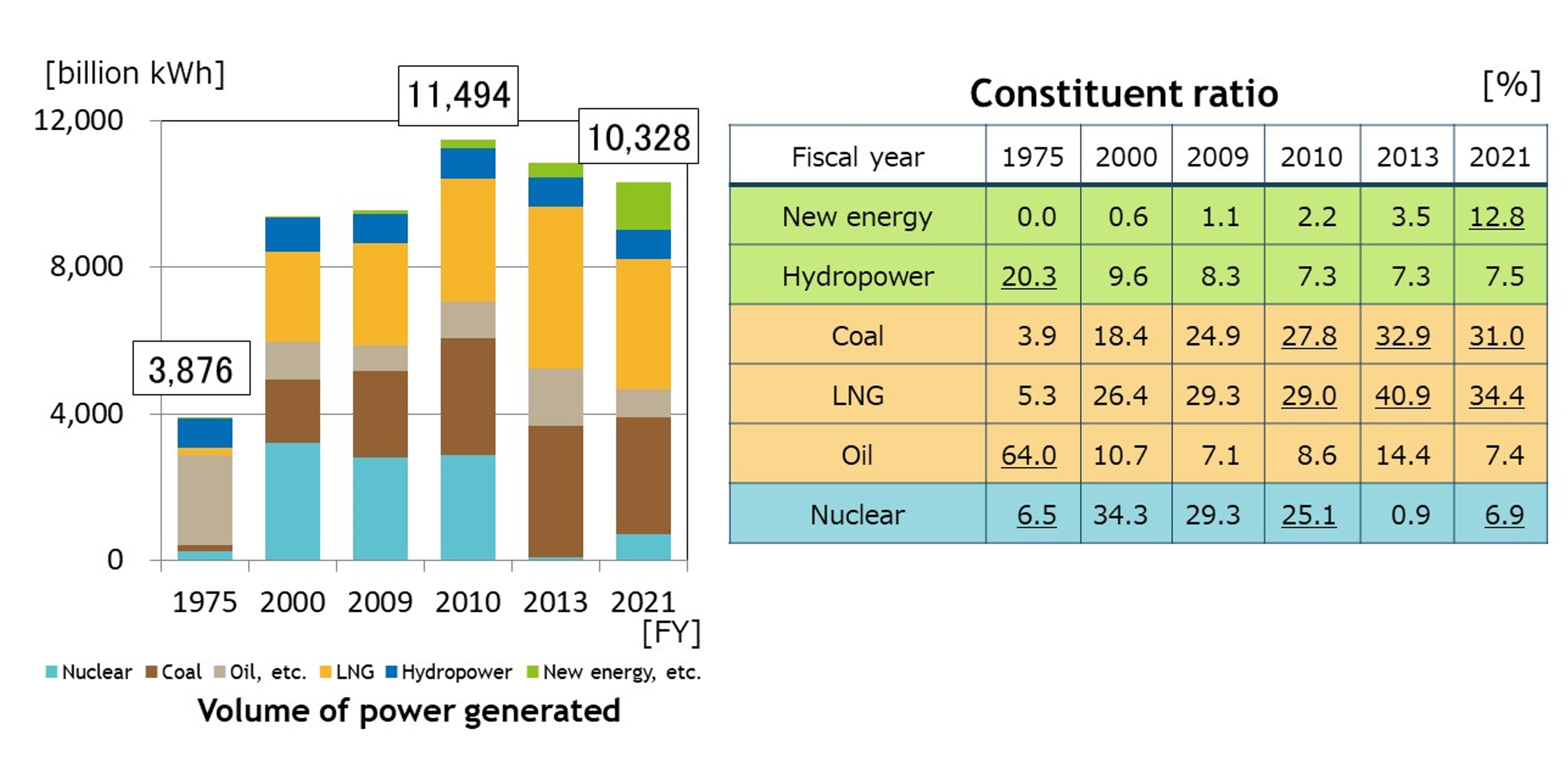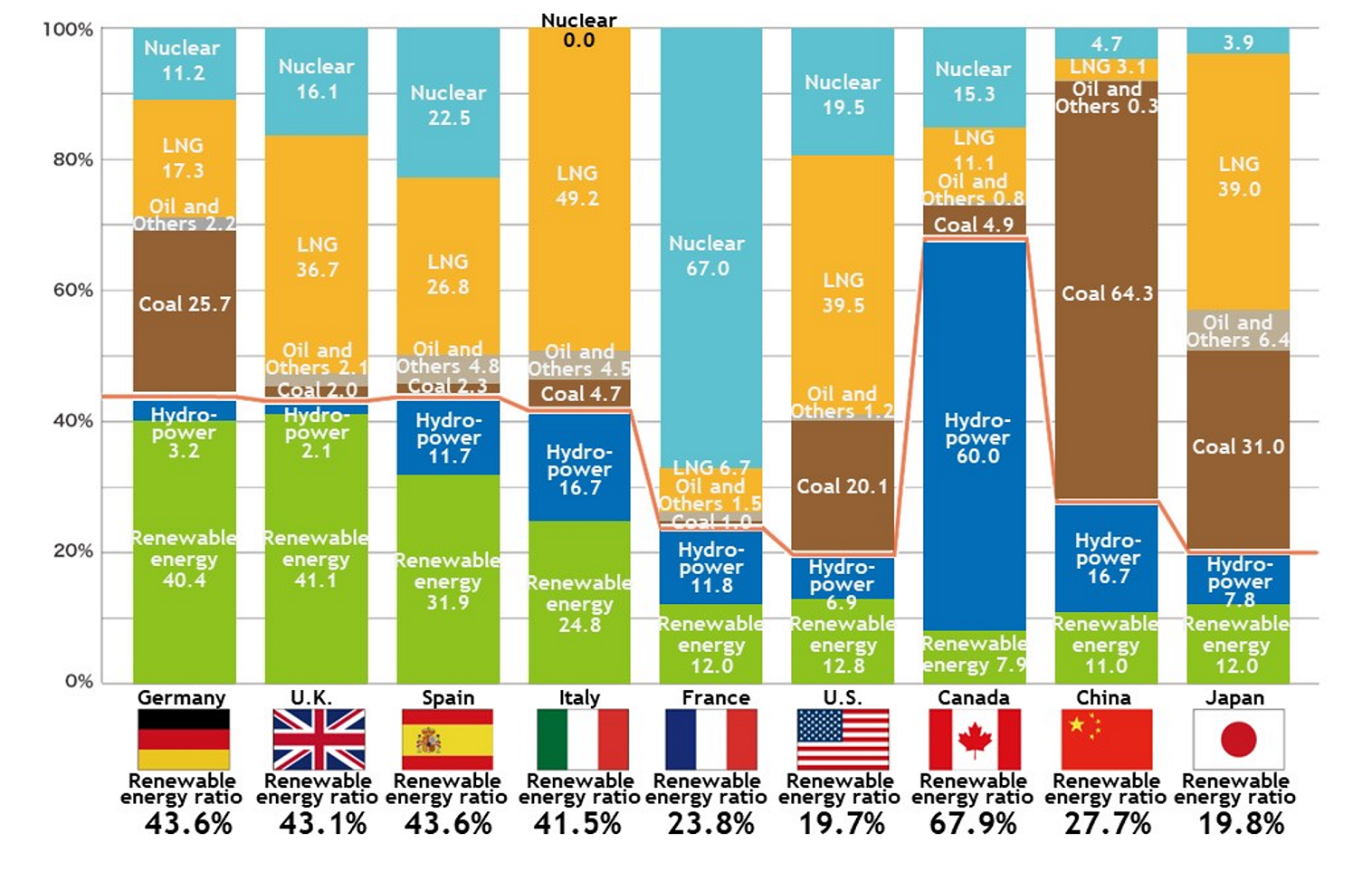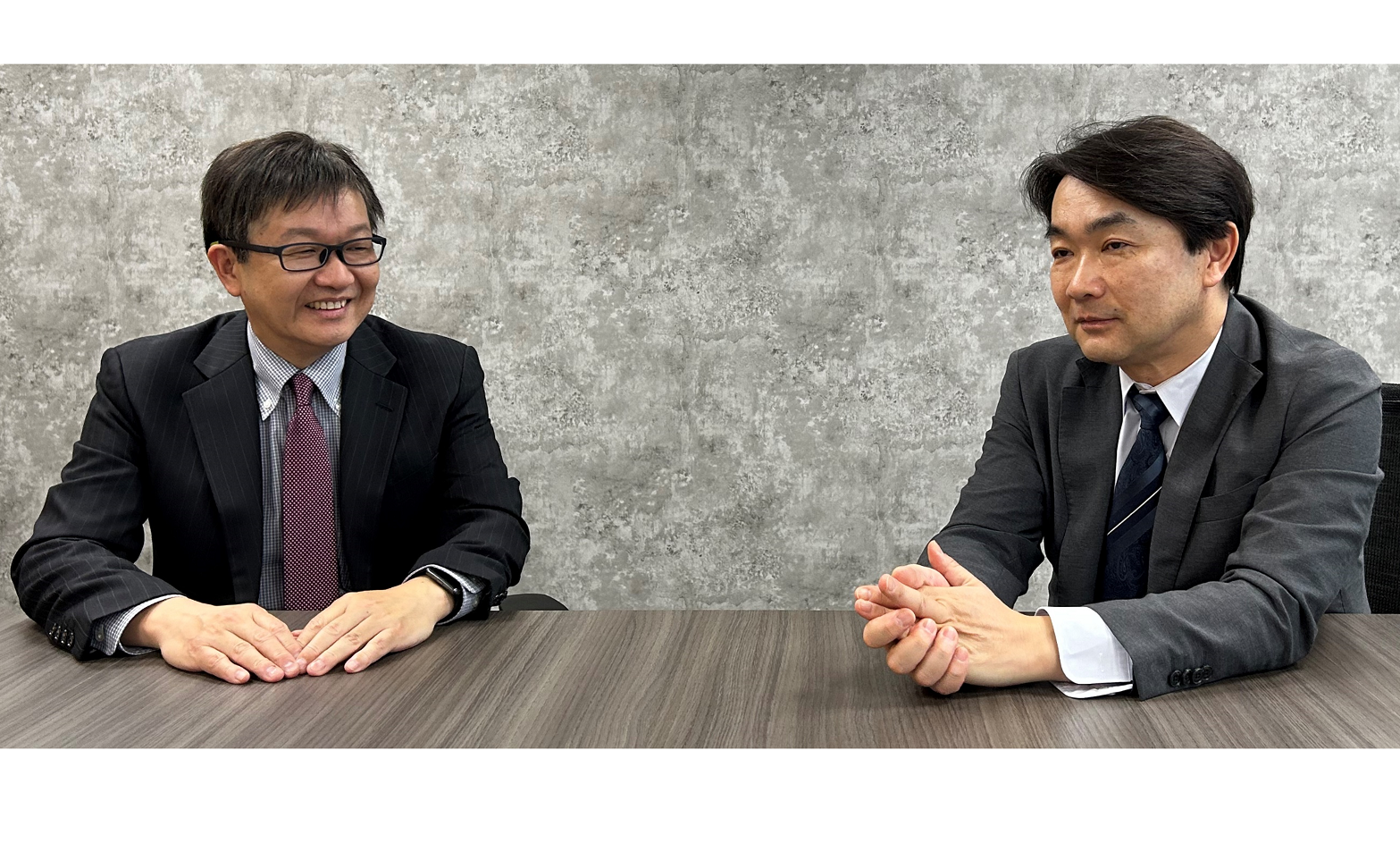In this series of articles, under the theme of achieving carbon neutrality, we invite experts who are working on energy issues in various fields to engage in a discussion with Tatsuya Yamada―Division General Manager of Hitachi's Energy Business Division, which is working on policy proposals relating to electric power and energy―and introduce trends in each industry. Through these discussions, we consider carbon neutrality from various angles, such as the formulation of a process and vision for achieving carbon neutrality, initiatives aimed at achieving it, and environmental development.

This time, we consider the outlook for the future, focusing on the energy mix and future energy supply and demand scenarios―which are becoming increasingly important in Japan's energy policy―as well as the state of the energy system. Our guest is Kazuo Ishikawa, who was involved in energy policy at the Ministry of Economy, Trade and Industry (METI) and the Agency for Natural Resources and Energy (ANRE), and is now a policy analyst and policymaker who engages in a wide range of policy research and makes recommendations, specializing in theories of social security-related industrial policy, energy policy, safety nets, and administrative reform.
Yamada: Mr. Ishikawa, I had the pleasure of debating with you at Hitachi Social Innovation Forum (HSIF) 2023, held at Tokyo Big Sight last fall, on the topic of visions for power systems for creating a carbon neutral society.It was a short time, but you made some very interesting points without worrying about anyone's feelings, and it was a great success. Thank you very much for that.
Ishikawa: Yes, there was a lot of excitement from start to finish.
Yamada: I was particularly impressed by your comments about the need to return Japan's electric power mix―that is to say, its energy mix―to the state it was in before the (2011 Tohoku) earthquake and tsunami. Another thing you mentioned is the Japanese government's master plan for developing the national power grid based on the premise of further increasing the introduction of renewable energy, and how the amount of 6 - 7 trillion yen calculated by the government will not be enough to cover the cost. I believe that this is a very important perspective in relation to Japan's energy policy, and I would like to deepen our discussion on these points today.
First of all, as a starting point, please tell us how you view the current situation with regard to energy supply and demand, both in Japan and worldwide.
Ishikawa: Certainly, partly because we have had a warm winter this year, I don't think we will be hearing that the supply and demand for electricity was tight. Rather than being due to the warm winter, though, I think a bigger factor was the fact that last summer, there was the prospect that thermal power generation―which had not been operating until now―might soon be able to operate. So, there is no problem from a supply and demand perspective. The point is, though, it is costing money. In the case of thermal power generation, as fuel costs continue to soar, subsidies―where the government covers part of electricity bills―have been introduced continually to reduce the burden on households and businesses. What I'm saying is, is it really okay to leave things as they are?
Yamada: As you say, from a stable supply perspective, this year we are experiencing a warm winter, and the government's forecast is that we will be fine. Of course we don't know what will happen in the future, but it is unlikely that there will be a request to save electricity like in 2022. In the background, though, households and businesses are also doing their best to save electricity in the face of soaring electricity prices. Electricity bills have risen by around 40% compared to last year, so of course people are trying to save electricity. The increase in solar power generation during the day also seems to be contributing to a stable supply.
Ishikawa: Only, in the case of solar power generation, it is fine during the day, but suddenly stops working in the evening and at night. In the end, it is thermal power generation that covers the supply and demand at night. I have solar panels on the roof of my house, too, so I’m in no position to talk big―but if the amount of solar power increases, then the utilization rate of thermal power will decrease accordingly. If that happens, then the incentive to invest in thermal power will decrease. In the past, with the fully distributed cost method (rate-of-return regulation) it was possible to recover the cost of capital investment by reflecting it in electricity bills. But with the review of this system and the progress of liberalization, investment in thermal power has grown weaker. Naturally, old equipment will no longer be maintained, and maintenance and management will become less thorough. So, things may be alright this winter, but in a few more years thermal power may become unsustainable. In other words, there it is possible that there will be a power shortage.
Furthermore, as you mentioned earlier, the progression of power saving efforts means there is a price restraint mechanism at work. Of course, we can say that this is a good thing in that we do not have to pay extra costs. But the downside is that productivity is also declining by that amount. Saving electricity is a good thing in terms of limiting the consumption of fossil fuels, but it also limits productivity, so the economy does not heat up. It would be a problem if corporate activities were to shrink as a result.

Changes in Japan's Power Supply / Energy Mix
Source: Based on Agency for Natural Resources and Energy (ANRE) statistics
Yamada: Yes, you're right. What is your view of trends in the supply and demand for electricity around the world?
Ishikawa: In the EU, energy costs are rising, especially in Germany. But, the situation in the United Kingdom and France―where nuclear power plants are operating―is not as bad as in Germany. Electricity prices increased sharply for while, but this now seems to be calming down, except in Germany.
In Germany, after Russia's invasion of Ukraine, the supply of natural gas from the Nord Stream pipeline―which sends natural gas from Russia to Germany―was suspended. Germany also suspended the approval process for Nord Stream 2, which had already been completed, as a sanction against Russia. This is having quite a lingering effect. In addition, as Germany continue to move away from nuclear power, it can be said that the impact of stopping all nuclear power generation in early 2023 has also been significant. As a result, electricity prices have risen relatively.
However, all countries in Europe―including not only Germany but also the United Kingdom―are connected by international interconnecting grid, and power needs can be mutually accommodated. Electricity generated by thermal power, nuclear power, and renewable energy are all mutually interchangeable. So, even though the price of electricity in Germany is high, I think it is unlikely that there will be a blackout because it is possible to send power and receive power from other countries if necessary. In fact, Germany is also a coal producing country. Despite this, they are choosing not to use it due to decarbonization, and are focusing more on wind power instead, which is causing electricity bills to rise even more. It costs money to keep the current power supply configuration.
On the other hand, after the 2011 Tohoku earthquake and tsunami, Japan stopped all nuclear and relied only on thermal power for a while. Although some nuclear power plants have finally begun to be restarted, there are still very few. I think we need to think carefully about whether it is really okay to leave things as they are.
Yamada: While we can't simply compare our energy (mix) with other countries, there are many things we can learn from them about policy.

Volumes of electricity generated and percentages of power sources in the amount of electricity generated
in major countries (2020)
Source: Agency for Natural Resources and Energy (ANRE),
Ten Questions to Get to Know About Energy in Japan Now, February 2023
Yamada: How do you see the challenges facing Japan from the perspective of achieving a safe and sustainable balance of energy supply and demand, with a view to achieving carbon neutrality?
Ishikawa: One of the most common misconceptions, when talking about carbon neutrality, is that it means not emitting any CO2 at all. This is not the case. We are also developing CO2 absorbers―such as with forestry conservation and CO2 fixation technologies―aiming to offset positive and negative emissions for overall zero emissions. Rather than aiming to phase out fossil fuels entirely, I think it is realistic to work toward low-carbon emissions and CO2 absorption and fixation as a set. This is because, currently, it is impossible to use no fossil fuels at all. Although there are seasonal fluctuations, around 80?90% of the world's energy consumption―including transportation―currently depends on fossil fuels, and it is impossible to stop all of that.
In the case of Japan, though, restarting nuclear power plants can significantly reduce fossil fuel consumption. This alone can contribute significantly to creating a low-carbon society. China is the world's largest CO2 emitter, followed by the United States. In the case of the United States (North America), however, even though nuclear power accounts for almost 20% and renewable energy accounts for over 20% of the energy mix, CO2 emissions amount to 4,817,720kt―just over 14% of total global emissions. (Total global emissions: 33,566,428 kt. Source: World Bank Open Data, 2020). Meanwhile, Japan's CO2 emissions are less than one-quarter those of the United States (1,014,065kt), so you can imagine how low they would be if Japan restarted (more of) its nuclear power plants. I think the fact that countries such as China and the United States have tremendous energy consumption is significant to begin with.
In the case of China, coal consumption accounts for nearly 60% of the energy mix, so I think that simply replacing this with high-performance Japanese thermal and nuclear power generation technologies will contribute greatly to reducing CO2 emissions on our planet.
Yamada: Hitachi has transferred most of its thermal power generation business to other companies, but I think there is still great potential to contribute to the reduction of CO2 emissions around the world through technologies related to nuclear power generation.
Incidentally, behind the progress of technological innovation in Japan is the history of Japan's electric power companies and manufacturers teaming up to create high-quality technologies in the Japanese market, as demand grew along with industrial growth. Since it was possible to recover costs through with the fully distributed cost method, it was possible to create increasingly better technologies.
But as price competition intensified due to the liberalization of electric power, it became more difficult to do so. CO2 absorption and fixation technologies are currently facing a bottleneck due to costs, and although various technologies exist, they are not widely used. Naturally, there are costs at the demonstration (proof-of-concept) stage, so I think the only way to overcome this is to ask the government to support us through subsidies and other means.
Ishikawa: Listed companies have shareholders, so naturally, from a business management perspective they have no choice but to withdraw from businesses where they cannot secure a return on their investment.

Ishikawa: With regard to the fully distributed cost method that you just mentioned, there has been criticism that it makes companies too comfortable because it is a form of "rough accounting," but as you said earlier, there are many positive aspects. Once, when I appeared as a guest on a news program, a head of local government who appeared with me said that the fully distributed cost method is the culprit. Then when I said, "No, that's not right. It's a mechanism to prevent electricity rates from rising," the whole studio froze." (Laughs) As proof of this, electricity rate increases have never been approved for a price increase since 1980. In 1992, it was decided to incorporate fluctuations in fuel prices and exchange rates, but aside from that, neither electric power nor city gas rate increases have been approved. This was possible because electric power companies were able to continue their business―including capital investments―while maintaining their margin within the fully distributed cost method.
But when I told the truth on TV like that, they stopped inviting me to appear on that station for a while... (Laughs)
Yamada: It makes you think, doesn't it?
Ishikawa: After all, investment is the cornerstone of development. But in the name of liberalization we stopped doing that, because we only saw the bad side―the "rough accounting"―of the fully distributed cost method. Since the liberalization of the electric power market began in 2016, some people may say that electricity prices have actually become cheaper. But they have only become cheaper for the rich. Although the number of options has increased due to the diversification of electricity rate plans, the electricity and gas bills of households on welfare and tax-exempt households have not decreased. Liberalization, in a sense, means that power companies can now choose their customers, as opposed to customers choosing their power companies. At the end of the day, the fact that the percentage burden placed on low-income groups has not decreased means that this policy has failed.
As stipulated in the Electricity Business Act, electric power utilities are required to protect the interests of electricity users and ensure the safety of the public―that is, to conduct business for the welfare of the public. I think that it is extremely problematic, from the perspective of public welfare, that low-income groups are not benefiting from the liberalization of the electric power market at all. That's why I've been opposed to the complete liberalization of electric power.
Yamada: Partial liberalization has its merits, but there are various issues with complete liberalization, aren't there?
Kazuo Ishikawa
Policy analyst
1965: Born in Fukuoka
1984-1989: Department of Resource Development Engineering, Faculty of Engineering,
The University of Tokyo
1989-2008: Ministry of International Trade and Industry
(Ministry of Economy, Trade and Industry / METI)
(In charge of electric power and gas market liberalization, renewable energy, environmental assessments, rationalization of domestic coal mining, industrial safety, industrial finance and SME finance, installment sales and credit, reform of the national civil service system, etc.)
(Since his retirement, he has served as a member of the Cabinet Office Council for Regulatory Reform and Council for Administrative Reform work groups, a senior researcher at the Tokyo Foundation for Policy Research, a visiting professor at the National Graduate Institute for Policy Studies, a specially appointed professor at Tokyo Women's Medical University, and a visiting professor at Senshu University.)
2011: CEO, Institute for Industrial Growth and Social Security Policy (IIGSSP)
(Since then, he has served as an officer and advisor to many companies and organizations.)
September 2020-September 2022: Temporary Expert Advisor, Minister's Secretariat, Ministry of Economy, Trade and Industry
April 2021-: Regional Promotion Advisor, Suttsu and Kamoenai, Hokkaido
April 2022-: Presenter, Canary (Kazuo Ishikawa's Canary of Crisis), BS TV Tokyo
● Currently, he also appears on many other TV, radio, and online programs as a commentator and quiz show respondent.
● His business ventures include brain education for infants, elementary school students, and seniors, and various venture capital investments.
● He is also author of books such as The Right Way to Stop Nuclear Power Plants (PHP Shinsho), etc.
Tatsuya Yamada
Division General Manager, Energy Business Planning & Management Division,
Energy Business Division, Hitachi, Ltd.
Vice President, Institute of Electrical Engineers of Japan, and Regular Member,
The Japan Society of Public Utility Economics.
Tatsuya Yamada joined Hokuriku Electric Power Company in 1987, and was seconded to The Institute of Energy Economics, Japan in 1998 before joining Hitachi, Ltd in 2002.
He has engaged in tasks involved in the planning of strategies for energy-related businesses, and became Director of the Management Planning Office, the Strategy Planning Division in 2014, Senior Manager of the Business Planning Division, the Energy Solution Business Unit in 2016, General Manager of the Business Planning Division, the New Age Energy Business Co-create Division in 2019, and assumed his present positions in 2020.